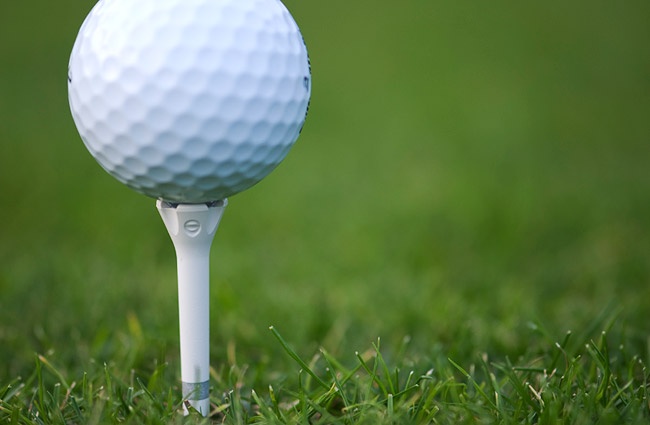The First Tee – WGC Match Play

For the first time ever, DraftKings has figured out Match Play which is an exciting development! This week it’s crucial to not make lineup decisions until after the draw, and to note the rules:
HOLES WON +3
HOLES HALVED +0.75 PTS
HOLES LOST -0.75 PTS
HOLES NOT PLAYED +1.6 PTS (to the winning golfer only)
MATCHES WON +5 PTS
MATCHES HALVED +2 PTS
STREAK OF 3 CONSECUTIVE HOLES WON IN MATCH {MAX 1 PER ROUND} +5 PTS
NO HOLES LOST IN MATCH BONUS +7.5 PTS (10 holes played to qualify)
Other things of note: In the case of a WD, the winning golfer gets awarded all the points as Holes Not Played. The other change is that once it hits the Round of 16, if playoff holes are needed they are also counted towards the total point total.
For Match Play, the top-4 golfers will get to play seven matches each, so at least two of the top-4 will most likely be needed to do more than min-cash. As a #toutlife caveat, unless you can max-enter the large GPPs, I would stick to cash games, single entry, or 3-max tournaments; with a field of only 64, there will be duplicate lineups everywhere, and the chalk this week will be mega-chalk. Taking a flyer on a cheap low-owned golfer in a tough draw will have to be done to take home any big money otherwise.
THE COURSE
The WGC Match Play event takes place in Austin, Texas, at the Austin Country Club. It’s a par-71 which is essentially meaningless this week, with the front-9 having only one par-5 and two par-3s, playing ~150 yards longer than the back. Last year there were 10 total eagles made on the front – eight on the back – with nine of those coming at the easy par-5 6th and the other being a par-3 ace. Golfers will need to play the 6th hole and the preceding hole (370-yard par-4 5th) well, as those are far and away the two easiest holes on the front. The front-9 holes were played 1871 times versus 1485 on the back-9 (+386 times), which is why there’s a bit more focus on those holes in this breakdown.
On the back-9, there are two par-5s, two par-3s, and two very short par-4s that come in at 317- and 368-yards. The stretch of 16-17-18 won’t be played often – 18 was played 60 times over the course of the tournament last year – but 16 and 18 if they come into play are both necessary birdie holes. Length off the tee will make the difference on the back, whereas the front half of Austin C.C. fits most games.
The Pete Dye design hits most of the notes Dye courses are known for: narrow fairways that reward accuracy off the tee, some trees lining the fairway (not as many as typical), large fairway bunkers, and it rewards second-shot golfers. There are few hazards on the course (water a couple times), and the rough isn’t much to speak of so it’s not as punitive to pull driver off the tee, but the better approach angles will be found by clubbing down.
With the way the fairways narrow outside 300-yards, the golfers that take a bit off their tee shots by clubbing down will be put in much better positions for their approach shots, but they’ll also need to be strong with their mid-to-long irons – it’s no coincidence that players like DJ and Rory have had success here. Target longer proximity players (150+) even with the shortness of the course.
The Bermuda-grass greens here are fast and firm and shouldn’t present much of a challenge to players that have been rolling through the Bermuda greens in Florida over the past few weeks.
STATS
The Strokes Gained stats to focus on in order (not including Tee to Green):
- Approach
- Off the Tee
- Putting
- Around the Green
Counting stats to focus on in order:
- Par-4 Birdie or Better %
- Proximity to the Hole
- Distance from the Edge of the Fairway
- Par-3 Scoring
- Scrambling
Top-Tier Golfers
I’m ignoring Match Play records for golfers this week, as the sample on most is not indicative of playing talent. There will be arguments made for MENTAL TOUGHNESS, etc. on Twitter all week (see: Patrick Reed for Team USA, Brian Harman for NCAA, etc.), but just pick the best golfer for the course. Although there are two distinct ways to succeed at Austin C.C., these four golfers are all bombers, who tend to have more scoring upside than the accuracy golfers.
Jon Rahm ($10800): The third-best player in terms of Par-4 Birdie or Better % (and T4 in overall P4 Scoring), Rahm has the skillset needed to succeed here even as his approach game has fallen off a cliff statistically. The Spaniard is currently 2nd in the PGA off the tee even as his accuracy has lagged behind, and his overall tee-to-green game sits 32nd which is accounting for his horrible SG: Approach rank of 135th.
What’s impressive about Rahm is that even as the irons sag, he still manages to find just under 70% of greens in regulation, and he’s 46-under par from the fairway even with horrible proximity numbers (33’ from the pin from the fairway). He’s a statistical anomaly in that he’s averaging the second-most birdies – huge for match play – with 4.93/round, and he has the second-highest BoB% after Dustin Johnson. With six of the first nine holes coming as relatively easy par-4s, Rahm’s skill on those holes should help him find his way to the Round of 8.
Justin Thomas ($11400): As the 6th-longest hitter on Tour (all drives), J.T. ends up in position to score so consistently that he’s a must-play even at this price point. Thomas demolishes par-4s (23.01%, 1st) and par-5s (59%, 2nd), has picked up 10 eagles in 24 rounds, and averages 4.56 birdies per round which is good for 7th.
Last year’s player of the year – who is in incredible form after 2nd, 1st, T9 in his last three events – is elite in most categories, but his long distance off the tee often puts a short iron or wedge into his hand, where he’s the 3rd-best golfer relative to par. Thomas sits 18-under between 50-125 yards (average proximity 17’10”), and he’s 5th-overall in SG: Approach.
The only concerns with J.T. are his driving accuracy, as he’s still prone to getting wildly inaccurate at times. His aggressive play works well however, as losing one hole wouldn’t put him in as bad a situation as picking up a double-or-worse would in stroke play, and he’s both smart and aggressive enough to pick that back up later in a match.
Other golfers to consider: Gary Woodland ($8100), Hideki Matsuyama ($9000)
Value Golfers (below $8000)
Tony Finau ($7900): Finau rates out almost perfectly for this course and should be a match play stud given his aggressiveness, but as always hit putter is the main issue. He’s the longest golfer on Tour (ranked DD, he’s 8th in All Drives) and currently ranks 39th in SG: Off the Tee, thanks to his atrocious accuracy – Finau hits the fairway only 52.39% of the time. His short iron play would seem to need work as he’s only -6 on approach shots between 50-125, but for a long hitter he’s actually been hitting woods and irons off the tee a bit more; Finau’s only taken 51 shots between 50-125 yards.
Since he’s a long hitter, his scoring stats are very strong on par-4s and -5s, sitting 39th/23rd in P4/P5 Scoring, and 46th/31st in P4BoB%/P5BoB%. His birdie average of 3.89 is strong especially considering his price point, and unless he ends up with DJ, Rahm or JT, he’ll be have a great opportunity to upset a bracket.
Other values: Si Woo Kim ($7000), Thomas Pieters ($7800), Kyle Stanley ($6800)
Good luck this week! You can follow me on Twitter @adalyfrey if you have any questions, and my DMs are always open. REMINDER: this article was written before the bracket was released, if any golfers in this article end up in the same draw LOOK ELSEWHERE





